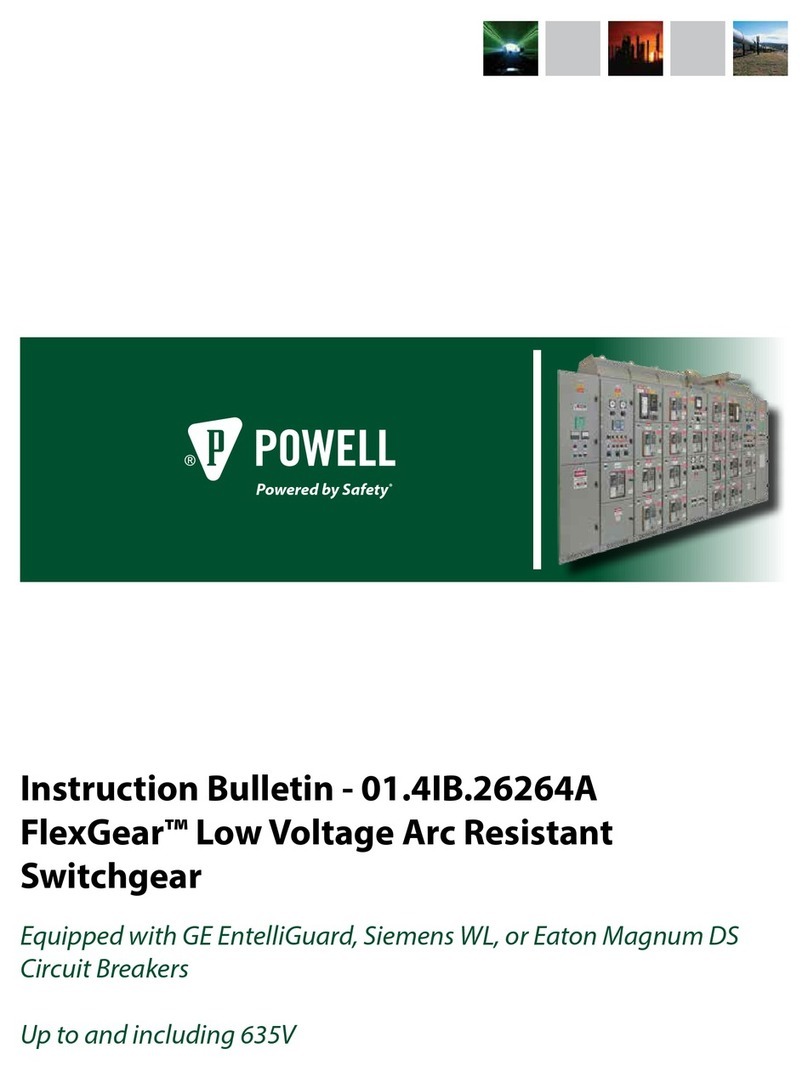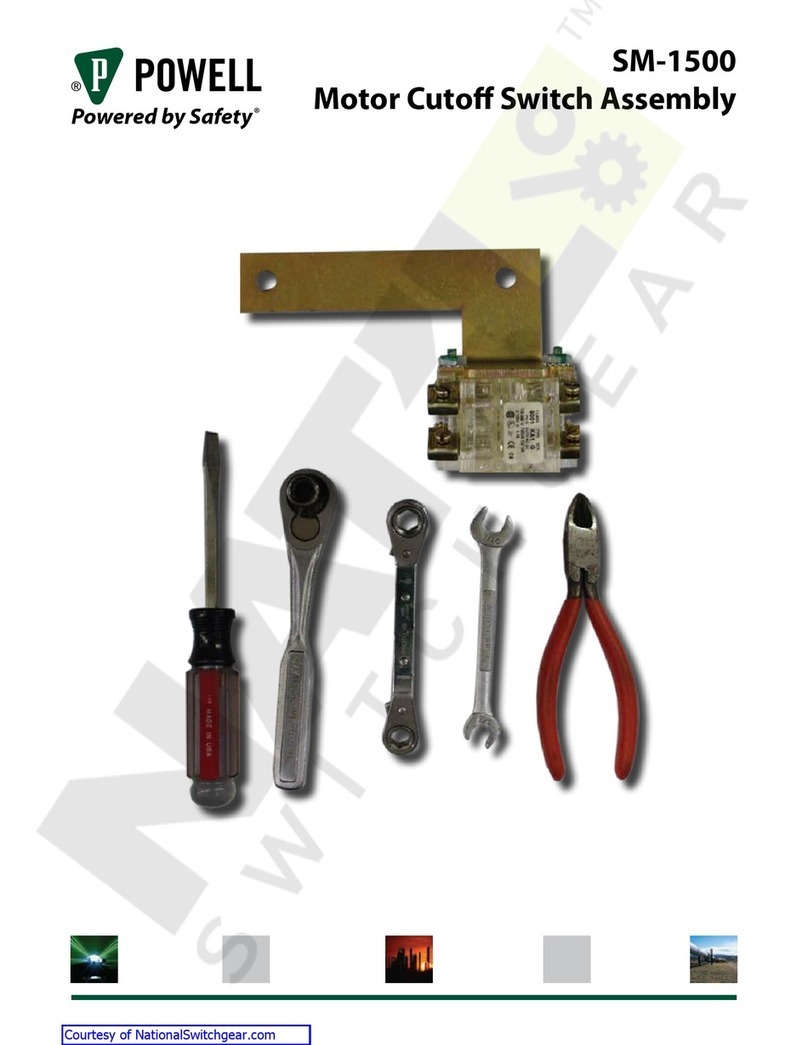
Powered by Safety®
4Safety
PowlVac®Ground & Test Device 15kV (ConEd EI-4102)
IB-50022A
C. GENERAL
1. Only supervised and qualified personnel
trained in the usage, installation, operation,
and maintenance of the 15GT36ASADE-23
ground and test device shall be allowed to
work on this equipment. It is mandatory
that this instruction bulletin, any
supplements, and service advisories be
studied, understood, and followed.
2. Maintenance programs must be consistent
with both customer experience and
manufacturer’s recommendations,
including service advisories and instruction
bulletin(s). A well planned and executed
routine maintenance program is essential
for ground and test devices’reliability and
safety.
3. Service conditions and circuit breaker
applications shall also be considered in the
development of safety programs. Variables
include ambient temperature; humidity;
actual continuous current; thermal cycling;
number of operations; interrupting duty;
and any adverse local conditions including
excessive dust, ash, corrosive atmosphere,
vermin and insect infestations.
D. SPECIFIC
When operating the ground and test device
safety precaution must be observed. Improper
use can result in death, serious personal
injury, or damage to the equipment. It is
important for the user to develop specific and
safe operating procedures to be observed
when using the ground and test device.
The following specific safety precautions must
be observed:
1. Do not close the grounding switch on
an energized circuit. The circuit to be
grounded should always be treated as
energized until proven otherwise.
2. Use great care when opening the test
port shutters to gain access to the test
receptacles. The test receptacles should
always be treated as energized circuits until
proven otherwise.
3. Any test device plugged into the test
receptacles must be properly rated for
the circuit voltage being tested and all
connections must be properly insulated.
4. Use only the test probes furnished with
the device to plug anything into the test
ports. Use of other plugs may damage the
test port or may result in a poor connection
which could be dangerous to the operator
and/or damaging to the equipment.
5. Even though insulated, the test probes
must not be inserted or extracted from
energized test ports. The test probe
insulation is only one part of a complete
line-to-ground insulation system and the
surface of the test probe may be energized
at a voltage above ground potential when
connection to an energized test port.
6. Do not attempt to force or bypass any
interlocks. The interlocks are furnished
for the safety of the operator and the
protection of the equipment being tested
and the test device. Forcing or bypassing
the interlocks can result in a condition
dangerous to the operator and/or
damaging to the equipment.
7. Do not attempt to service the device while
it is installed in a switchgear compartment
or on a lift truck. For service, the device
must be located either on the floor or on a
sturdy, level work bench, and blocked from
rolling.
































